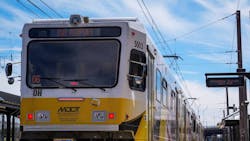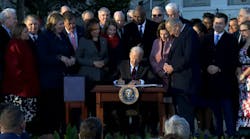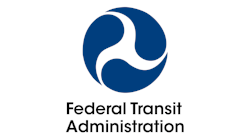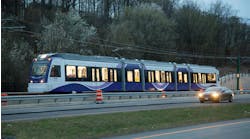FTA awards $213 million to Maryland Transit Administration to replace aging light-rail vehicles
The Maryland Transit Administration (MTA) has been awarded $213 million in funding from the Federal Transit Administration’s Rail Vehicle Replacement program. The grant will support the MTA's efforts to replace all 52 aging light-rail vehicles in its fleet with new, modern railcars. The state of Maryland is providing $90 million in matching funds and allocating $127.6 million in federal formula funds to the project to complement the federal grant, which was made possible by the Infrastructure Investment and Jobs Act (IIJA).
The IIJA has allocated $1.5 billion through 2026 to create the FTA’s Rail Vehicle Replacement program. To date, that program has invested more than $700 million in projects across the country to replace aging railcars and ensure safe and accessible travel to the communities that rely on them.
“Reliable transit in the Baltimore region is essential to connecting Marylanders with life’s opportunities and spurring economic growth,” said Maryland Gov. Wes Moore. “Thanks to Team Maryland’s continued support and advocacy, this funding from President Biden’s Bipartisan Infrastructure Law will help ensure MTA’s light-rail fleet is safe and operational for decades to come.”
“This federal funding is vital to enhancing safety, accessibility and performance on MTA’s light rail,” said Maryland Department of Transportation Secretary Paul J. Wiedefeld. “By having a more reliable light-rail fleet with low-floor cars, MTA will deliver premiere customer service to the greater Baltimore region.”
The $450 million light-rail vehicle replacement project is identified as a high priority in the agency’s Transit Asset Management Plan and Capital Needs Inventory and is included in the Baltimore Metropolitan Council’s long-range plan. The agency’s existing light-rail fleet includes standard, 95-foot rail cars dating back to the system’s launch in 1992. MTA notes all vehicles have reached the end of their useful life or will be reaching the end of their useful life within five years, a timeframe required by the Rail Vehicle Replacement program.
The proposed replacement for each light-rail car in the fleet is a modern, low-floor vehicle allowing for easier, more accessible boarding. The project will also improve the frequency and reliability of the light-rail system by reducing the number of vehicles that are regularly out of service for repairs.
The project’s benefits include:
- Improved accessibility and mobility: Elimination of steps up to the railcars will be more accommodating to all riders, including individuals using wheelchairs, mobility devices or pushing strollers.
- Increased frequency: New, more reliable trains will allow for shorter headways, reducing wait times for riders.
- Enhanced safety and comfort: The introduction of new trains will avoid safety challenges associated with aging vehicles and provide a more comfortable riding experience for passengers.
- Lower maintenance costs, higher performance: Ensuring all light-rail vehicles are in a state of good repair will reduce maintenance costs and improve service performance through the increased availability of trains.
- Improved equity: Investment in the light-rail system will benefit its more than 13,000 daily riders, including those from the 17 stations located in locations designated as Areas of Persistent Poverty.
“Safe, reliable and accessible transit is fundamental to the economic success of the Baltimore region and its people,” said MTA Administrator Holly Arnold. “This grant will help to ensure that Baltimore and Maryland continue to provide an equitable, modern transit system for years to come.”





